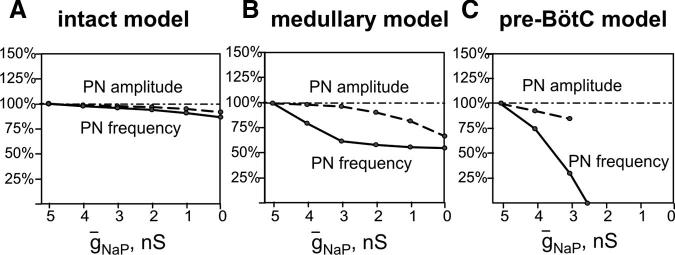FIG. 9.
Effects of reducing INaP on frequency and amplitude of motor output (PN) in the intact (A), medullary (B), and pre-BötC (C) models. Attenuation of INaP by riluzole in experiments is modeled by uniformly reducing the maximum conductance for the persistent sodium channels (ḡNaP) in all neurons of the pre-I population of pre-BötC. Effects of reducing ḡNaP on frequency (solid lines) and amplitude (dashed lines) of PN bursts (% control) closely reproduce experimental data shown in Fig. 5, A-C, including the initial decrease in frequency in the medullary preparation (B, cf. with Fig. 5B), and the decrease in burst frequency with decreasing ḡNaP and termination of rhythm generation (at ḡNaP = 2.5 nS) in the case of 1-phase rhythm (C, cf. with Fig. 5C). Reduction of burst amplitudes (dashed lines) is also consistent with experimental data, although perturbations in model are smaller than those observed experimentally.

